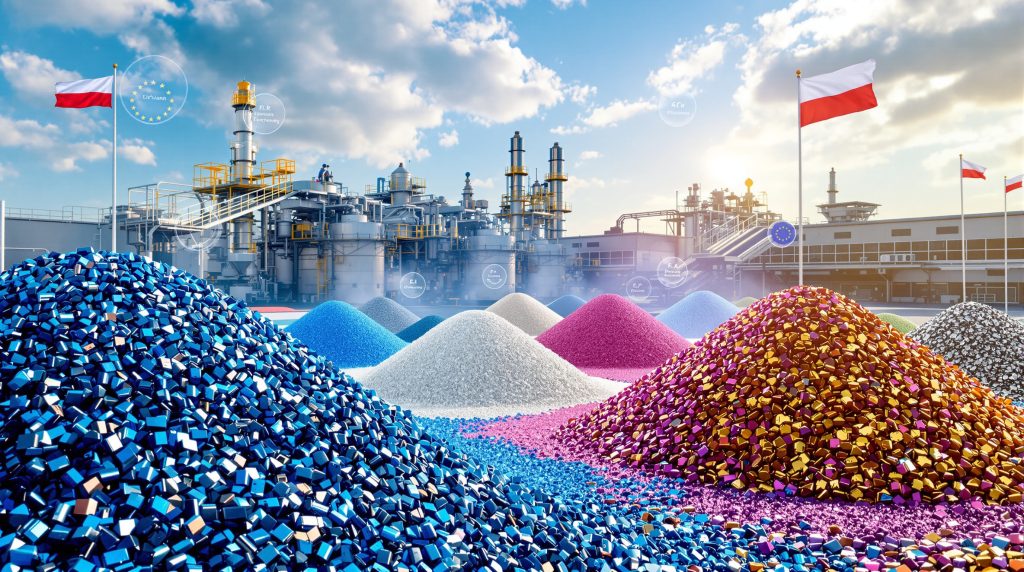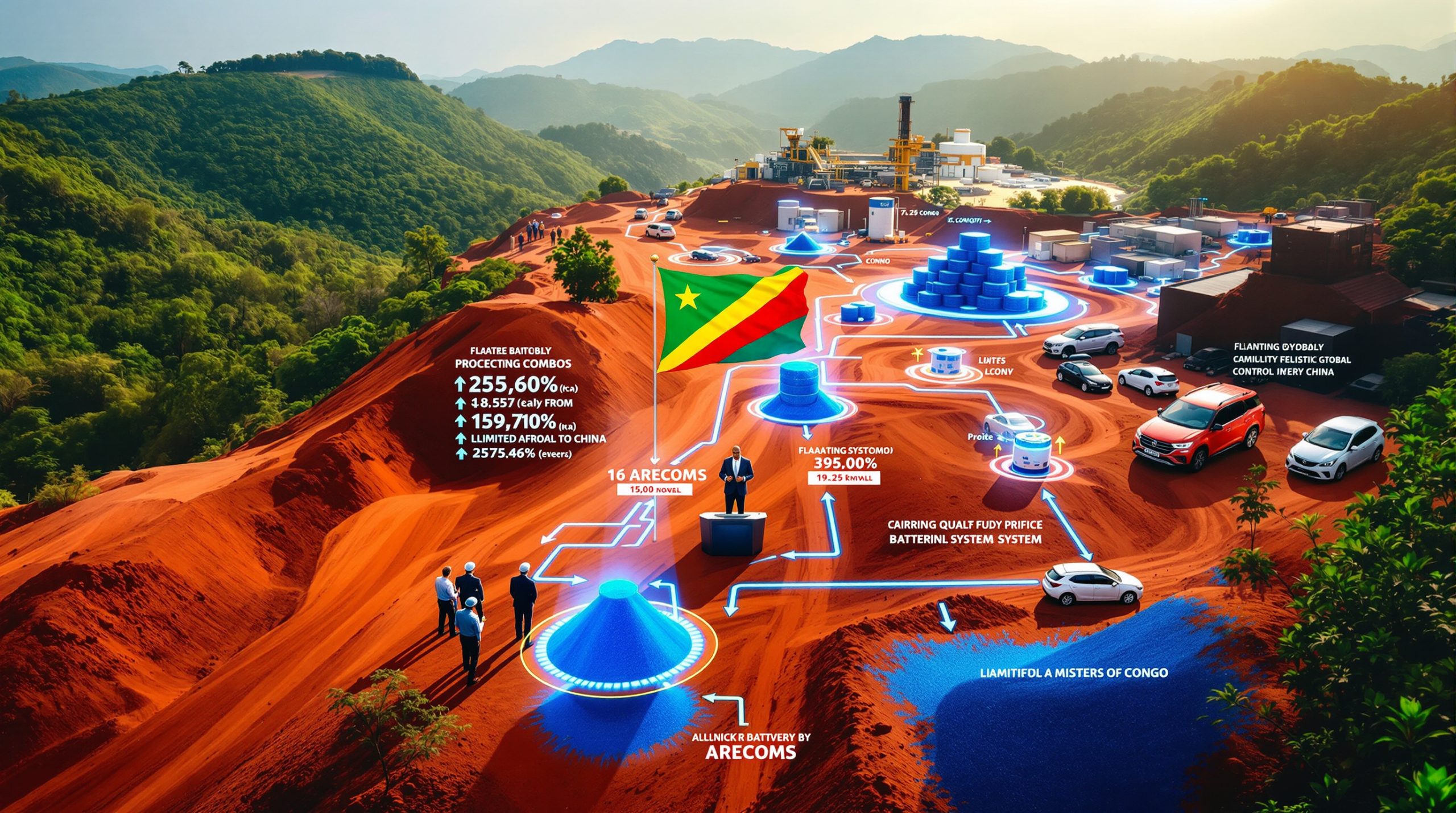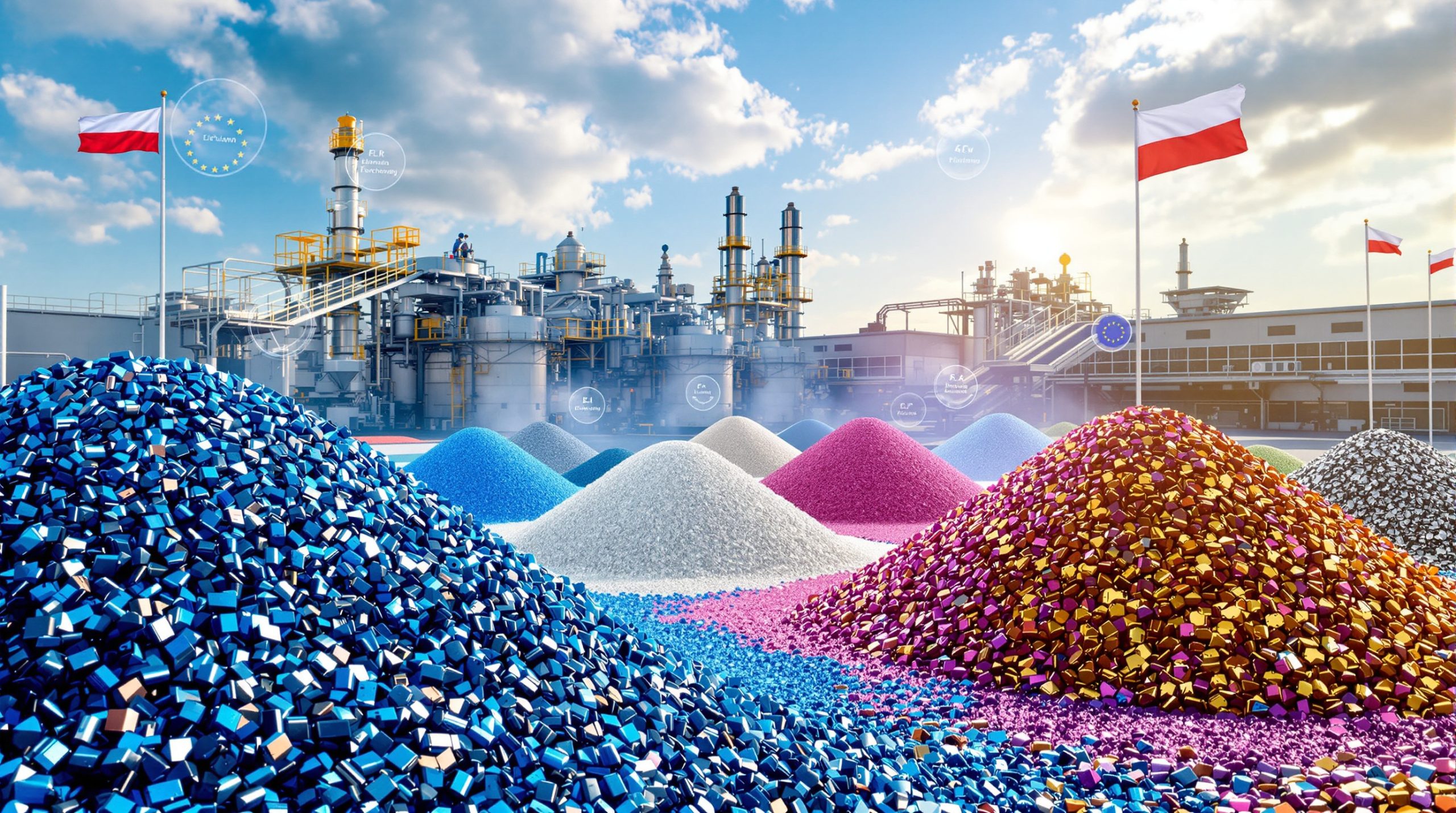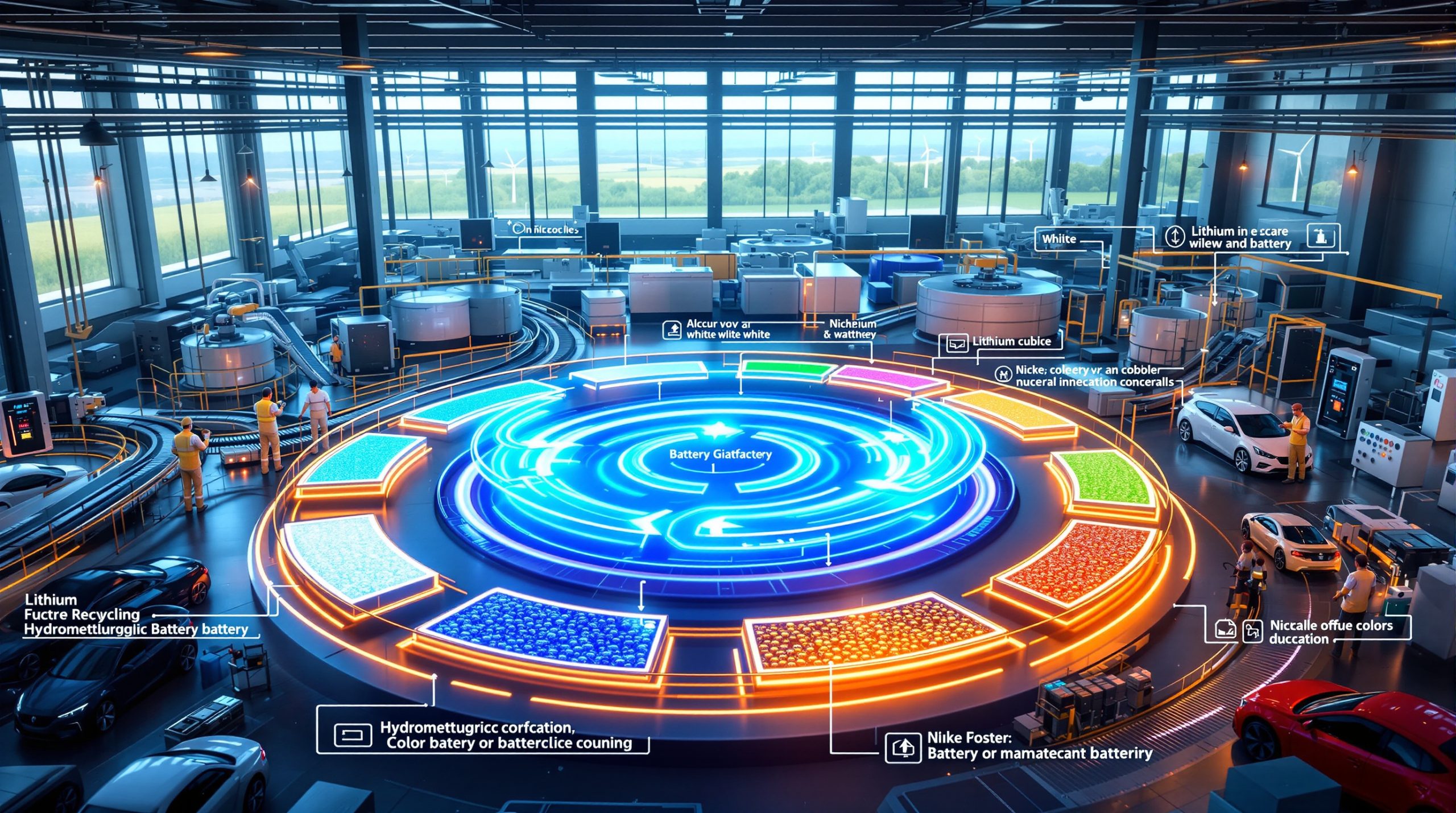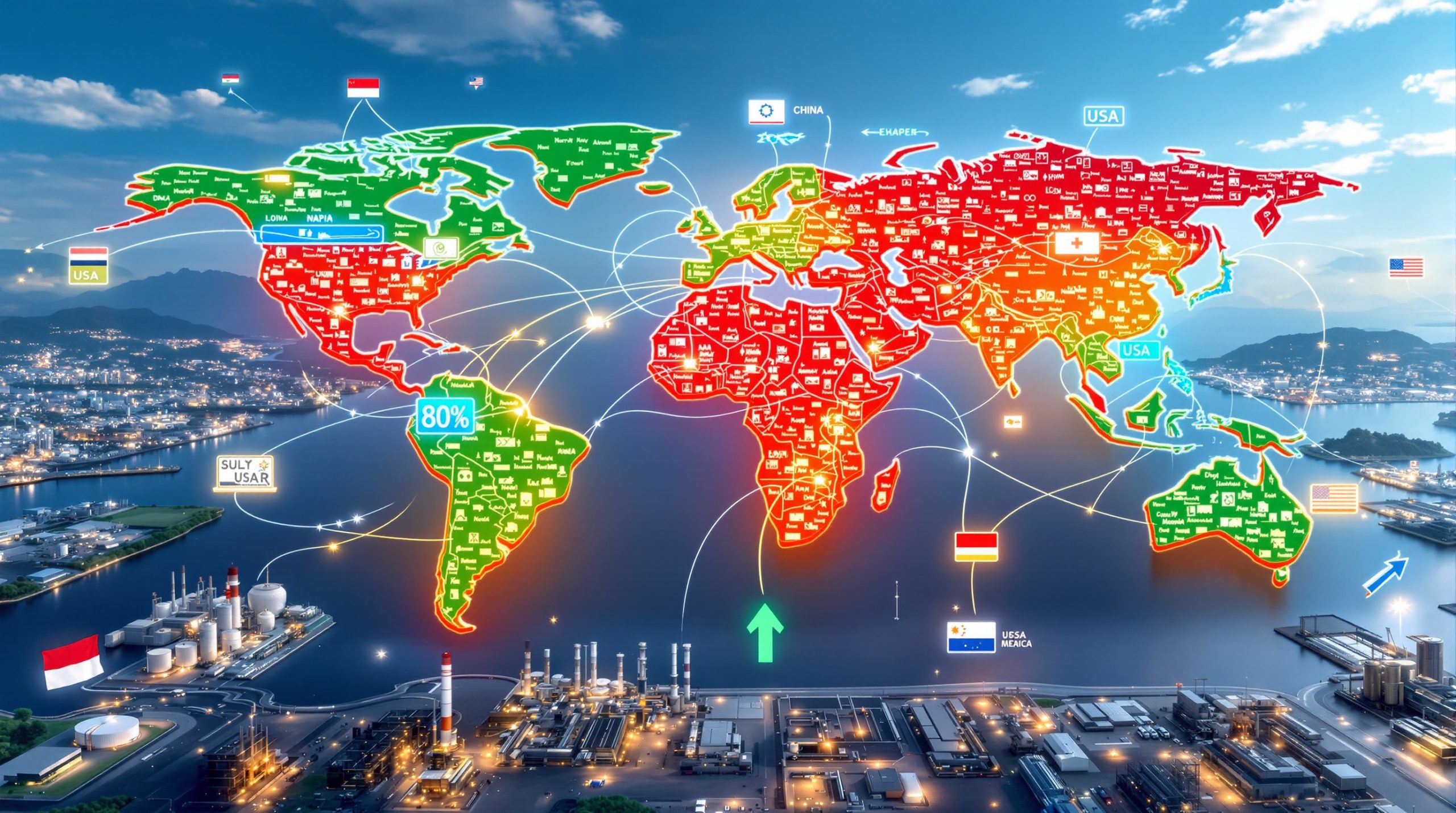What is Driving Poland's Battery Recycling Investment Boom?
Poland is strategically positioning itself as a European leader in battery recycling, bolstered by substantial government and EU funding initiatives. This strategic move aligns perfectly with Europe's critical raw materials transition objectives and responds to growing demand for sustainable battery production solutions.
The country's ascent in this sector is no coincidence. With a combination of geographic advantages, existing manufacturing infrastructure, and forward-thinking government policies, Poland has created a fertile environment for battery recycling innovation and investment.
Poland's Strategic Position in European Battery Production
Poland has rapidly developed into a battery powerhouse within the European Union, achieving several impressive milestones:
- Europe's largest lithium-ion battery producer, establishing dominance in a critical green technology sector
- Second globally after China in battery manufacturing capacity, demonstrating Poland's industrial competitiveness on the world stage
- Home to Europe's largest battery production facility at LG Energy Solution's Wrocław plant
- Contributes approximately 50% of the EU's total battery production capacity, according to International Energy Agency data
This manufacturing foundation provides Poland with natural advantages for developing complementary recycling capabilities. The proximity to battery production creates efficiency in the circular economy, with recycled materials feeding directly back into nearby manufacturing.
How Much Funding Has Been Allocated to Polish Battery Recycling?
The scale of financial commitment to Polish battery recycling projects reveals their strategic importance to both national and European interests. These investments represent some of the most significant green industry funding packages in the EU's eastern region.
Major Recent Funding Initiatives
- €240 million (1 billion zloty) government grant awarded to Elemental Battery Metals, representing approximately 35% of total project costs
- €320 million (1.2 billion zloty) proposed subsidy for Ascend Elements' planned facility in southwestern Poland
- Additional financing through equity, external debt, and investor funding to complete project budgets
- Support from multiple European financial institutions including development banks
The funding represents a strategic bet on Poland's ability to develop technological leadership in an industry critical to Europe's energy transition and manufacturing sovereignty.
Funding Mechanisms and Sources
- European Union's Temporary Crisis and Transition Framework (TCTF), established following the Ukraine conflict to accelerate Europe's shift to a net-zero economy
- Polish development ministry direct grants, awarded through competitive evaluation processes
- Private investment supplementing public funding, demonstrating market confidence in project viability
- Total project investments reaching €715 million (3 billion zloty) for Elemental's complete facility
These funding mechanisms demonstrate a coordinated approach between EU policy objectives and Polish economic development goals, creating a supportive ecosystem for battery recycling breakthrough innovation.
Where Are Poland's New Battery Recycling Facilities Being Built?
The strategic placement of Poland's battery recycling facilities maximizes logistical advantages while leveraging existing industrial infrastructure and talent pools.
Elemental Battery Metals Facility
- Location: Zawiercie, Poland in the country's southern industrial region
- Expansion adjacent to existing recycling operations, allowing for operational synergies
- Strategic central European position providing efficient access to battery manufacturing clusters
- Designed as an integrated recycling and refining complex for comprehensive material processing
The Zawiercie location provides Elemental with access to Poland's industrial heartland while maintaining proximity to major transportation routes connecting to Western European markets.
Ascend Elements Proposed Facility
- Planned location: Southwestern Poland (exact site remains undisclosed during final negotiations)
- Strategic positioning for European market access, particularly to German automotive manufacturers
- Proximity to battery manufacturing centers, reducing transportation costs for recycled materials
- Expected operational timeline: Production beginning in 2028 following multi-phase construction
The southwestern location likely positions Ascend to serve both Polish and German markets efficiently, capitalizing on cross-border supply chains in the region.
What Technologies Will These Recycling Plants Implement?
Polish battery recycling facilities will deploy cutting-edge technologies designed to maximize material recovery while minimizing environmental impacts. These processes represent significant advancements over first-generation recycling approaches.
Advanced Recovery Processes
- Black mass processing capabilities to extract valuable metals from battery cathodes
- Lithium-ion battery recycling technologies adapted for evolving battery chemistries
- Automotive catalytic converter recycling systems for precious metals recovery
- Critical metals extraction and refinement using hydrometallurgical and pyrometallurgical processes
These advanced technologies enable the facilities to process multiple waste streams, creating flexibility as battery technologies evolve and market conditions change.
Production Capabilities
- Processing capacity: Tens of thousands of tonnes annually at full operational capability
- Recovery of multiple strategic metals including lithium, cobalt, nickel, and manganese
- Production of precursor cathode active material (pCAM) at Ascend Elements facility
- Integration of cutting-edge metal refining processes to achieve battery-grade purity levels
The combined output from these facilities will significantly reduce Europe's dependence on imported battery materials while creating new value streams from previously discarded resources.
Why Is Battery Recycling Critical for Poland's Economic Future?
Battery recycling represents a strategic economic opportunity for Poland, offering benefits beyond the immediate jobs and investment. These projects position the country at the forefront of the circular economy while developing high-value technical expertise.
Economic Impact Assessment
- Job creation: 250+ new positions at Elemental's facility across production, engineering, and administration
- 200+ expected jobs at Ascend Elements plant with emphasis on technical specializations
- Development of high-skilled technical positions commanding premium wages in the Polish market
- Growth in engineering and administrative employment supporting regional economic development
According to Maciej Dudzic, CEO of Elemental Battery Metals, these investments transfer global know-how to Polish industry and create high-paying jobs, positioning the country for long-term economic benefits.
Strategic Economic Advantages
- Reduced dependence on imported raw materials enhancing national economic security
- Strengthened position in European battery supply chain as both producer and materials supplier
- Technology transfer benefits for Polish industry through advanced process development
- Establishment as a modern manufacturing and innovation hub attracting additional investment
Poland's battery recycling facility sector provides an opportunity to move up the value chain in manufacturing, shifting from component assembly to sophisticated materials processing with higher profit margins.
How Do These Projects Support European Sustainability Goals?
The Polish battery recycling initiatives align directly with European Union sustainability objectives, addressing both environmental concerns and strategic materials independence.
Alignment with EU Strategic Initiatives
- Recognition under the European Critical Raw Materials Act (CRMA) as projects of strategic importance
- Designation as one of 47 projects critical to EU materials security with Elemental's facility one of only two Polish projects on this list
- Support for Europe's transition to a net-zero economy through circular material flows
- Response to supply chain vulnerabilities exposed by the Ukraine conflict and geopolitical tensions
The projects exemplify the EU's strategy to build resilience through domestic capability development rather than continued dependence on external suppliers for critical materials.
Environmental Impact Benefits
- Circular economy advancement through recovery and reuse of valuable battery materials
- Reduced environmental footprint of battery production by decreasing primary resource extraction
- Decreased reliance on primary mining operations often associated with higher environmental impacts
- Support for electrification and renewable energy transitions through sustainable material supply
By establishing domestic recycling capabilities, Europe reduces the embodied carbon in battery materials while minimizing waste streams from end-of-life batteries.
What Materials Will Be Recovered at These Facilities?
The Polish recycling facilities will focus on extracting a diverse range of valuable materials from spent batteries and electronic waste, addressing critical supply shortages in the European market.
Critical Metals Recovery Focus
- Lithium extraction from spent batteries to support new battery production
- Cobalt, nickel, and manganese recovery for cathode material manufacturing
- Rare earth elements processing for specialized applications
- Precious metals reclamation from electronic waste and catalytic converters
These recovered materials provide essential inputs for Europe's growing battery manufacturing sector while reducing dependence on volatile global supply chains.
Material Applications and Markets
- Electric vehicle battery production as the primary market for recycled materials
- Energy storage systems supporting renewable energy deployment
- Telecommunications equipment manufacturing requiring specialized metals
- Defense industry applications utilizing strategic materials
- Consumer electronics dependent on efficient battery technologies
The diverse application landscape ensures stable demand for recycled materials even as specific sectors experience market fluctuations.
How Do These Projects Compare to Other European Recycling Initiatives?
Poland's battery recycling investments represent some of the largest and most ambitious projects in Europe, though they operate within a growing network of complementary facilities across the continent.
Comparative Scale Analysis
- Among the largest battery recycling investments in Europe based on production capacity
- Significant capacity compared to existing European facilities in terms of throughput
- Part of a broader European battery recycling network developing across multiple countries
- Complementary to similar initiatives in Germany, France, and Sweden creating a comprehensive ecosystem
While other European nations have established smaller recycling operations, the Polish facilities distinguish themselves through their integration of advanced refining capabilities alongside initial recycling processes.
Competitive Advantages
- Lower operational costs in Poland compared to Western European locations
- Existing manufacturing infrastructure providing logistical efficiencies
- Strong technical workforce with relevant industrial experience
- Central European location offering logistics advantages for material collection and distribution
These advantages position Polish facilities to potentially outcompete similar operations in higher-cost regions while maintaining comparable recovery rates and material quality.
What Challenges Do These Recycling Projects Face?
Despite strong government support and clear strategic alignment, Poland's battery recycling projects must navigate several significant challenges to achieve their ambitious goals.
Implementation Hurdles
- Technology scale-up complexities when moving from pilot to commercial operations
- Securing consistent feedstock supply as collection systems develop
- Meeting stringent environmental regulations for processing potentially hazardous materials
- Maintaining cost competitiveness against primary material sources
The technical complexity of battery recycling increases as manufacturers develop proprietary battery chemistries and designs, requiring recyclers to continuously adapt their processes.
Market Uncertainties
- Fluctuating raw material prices affecting recycling economics
- Evolving battery chemistries potentially requiring process modifications
- Competition from Asian recycling operations with established experience
- Potential economic headwinds affecting electric vehicle adoption rates
Market volatility represents a particular concern, as recycling operations require significant upfront capital investment while returns depend on stable material pricing over extended periods.
What Is the Timeline for Project Development?
The Polish battery recycling facilities will develop through carefully planned phases, balancing the need for rapid deployment with technical and operational considerations.
Development Phases and Milestones
- Elemental's first phase: Completed in 2024, establishing initial recycling capabilities
- Second phase construction: 2025-2026, expanding processing capacity and refining capabilities
- Ascend Elements production start: Targeted for 2028 following site development
- Full operational capacity: Expected by 2030 for both facilities
This phased approach allows for learning and optimization while generating initial revenue streams to support continued expansion.
Current Status of Projects
- Elemental: Grant agreement signed in September 2025, construction underway
- Ascend Elements: Preliminary agreement, site selection in progress
- Regulatory approvals being secured for environmental permits
- Technology implementation planning ongoing with equipment suppliers
The projects have achieved critical initial milestones but must maintain momentum through construction and commissioning phases to meet targeted operational dates.
How Will These Projects Impact the Global Battery Supply Chain?
Poland's battery recycling investments will contribute to a fundamental restructuring of global battery material flows, strengthening European autonomy while potentially influencing global market dynamics.
Supply Chain Resilience
- Diversification of critical material sources reducing dependence on dominant suppliers
- Reduced reliance on Chinese processing capacity currently controlling most battery materials
- Shortened supply chains for European manufacturers improving logistics efficiency
- Increased material security during geopolitical disruptions affecting mining regions
By establishing domestic recycling capacity, Europe creates a parallel supply stream less vulnerable to the geopolitical and market forces affecting primary material extraction.
Market Impact Projections
- Potential moderation of battery material price volatility through diversified supply
- Support for European battery manufacturing competitiveness via local material sourcing
- Contribution to meeting EU-mandated recycled content requirements for new batteries
- Enhancement of Europe's strategic autonomy in battery technology development
These market impacts extend beyond direct economic benefits, supporting broader European industrial policy goals of technological sovereignty and manufacturing resilience.
Frequently Asked Questions About Polish Battery Recycling Investments
What percentage of a lithium-ion battery can be recycled at these facilities?
Modern battery recycling facilities can recover up to 95% of critical materials from lithium-ion batteries. Polish plants are implementing advanced technologies to maximize recovery rates, focusing particularly on high-value elements like cobalt, nickel, manganese, and lithium. The remaining components, primarily aluminum and copper from casings and wiring, are redirected to conventional metal recycling streams.
How will these recycling plants source their battery feedstock?
The facilities will establish comprehensive collection networks with automotive manufacturers, electronic waste processors, and energy storage system operators throughout Europe. Battery collection infrastructure is developing rapidly under EU Battery Directive requirements, ensuring consistent feedstock supply. Additionally, these plants will process production scrap from battery manufacturing, providing immediate material streams while end-of-life battery volumes increase.
What environmental safeguards are being implemented at these recycling plants?
The plants incorporate state-of-the-art emissions control systems, water treatment facilities, and energy efficiency measures to minimize environmental impact. Closed-loop processing systems capture and reuse solvents and other chemicals, while continuous monitoring ensures compliance with EU environmental standards. The facilities are also implementing renewable energy systems to reduce the carbon footprint of energy-intensive recycling processes.
How do these investments support Poland's transition away from coal dependency?
These projects create high-value green economy jobs and establish new industrial capabilities that help diversify Poland's economy beyond traditional fossil fuel industries. By positioning Poland in the battery metals investment landscape, these investments attract complementary businesses and develop workforce skills applicable to multiple green economy sectors. Additionally, the material recovery processes support broader electrification goals essential for reducing coal consumption in Poland's energy mix.
Disclaimer: This article contains forward-looking statements regarding market developments, technological capabilities, and economic impacts. Actual results may vary based on regulatory decisions, technological advancements, market conditions, and other factors beyond current prediction. Readers should consider multiple information sources when evaluating investment or business decisions related to sustainable battery recycling technologies.
Ready to Identify the Next Major Mineral Discovery?
Discover how smart investors capitalise on significant ASX announcements with Discovery Alert's proprietary Discovery IQ model, delivering real-time alerts on potentially transformative discoveries before the market reacts. Explore historic returns of major discoveries and position yourself ahead of the market by visiting the Discovery Alert discoveries page.
